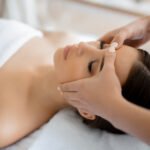Tretinoin, a derivative of vitamin A, is widely known for its effectiveness in treating acne and reducing the appearance of fine lines and wrinkles. Recently, it has gained attention for its potential role in promoting hair growth. But does tretinoin actually help in growing hair? Let’s explore the science behind this topical medication and its potential benefits for hair growth.
What is Tretinoin?
Tretinoin, also known as all-trans retinoic acid, is a topical retinoid commonly prescribed for acne, hyperpigmentation, and signs of aging. It works by promoting cell turnover, unclogging pores, and stimulating collagen production. Tretinoin is available in various formulations, including creams, gels, and lotions.
Mechanism of Action for Hair Growth
The potential of tretinoin to aid in hair growth is linked to its mechanism of action:
Increased Cell Turnover: Tretinoin accelerates the rate of cell turnover, which helps in the shedding of dead skin cells and the promotion of new, healthy skin cells. This action can potentially stimulate hair follicles that are in a dormant phase, promoting hair growth.
Enhanced Blood Circulation: The increased cell turnover and improved skin health from tretinoin use can lead to better blood circulation in the scalp. Enhanced blood flow provides hair follicles with more nutrients and oxygen, which can support hair growth.
Reduction of DHT: Some studies suggest that tretinoin may help reduce levels of dihydrotestosterone (DHT) in the scalp. DHT is a hormone linked to hair loss, particularly in androgenetic alopecia (male and female pattern baldness). By potentially lowering DHT levels, tretinoin may help slow down hair loss and support hair regrowth.
Scientific Evidence and Studies
The use of tretinoin for hair growth is still an area of ongoing research. While some studies and clinical observations suggest that tretinoin may have beneficial effects on hair growth, the evidence is not yet conclusive.
- Combination Therapy: Tretinoin is sometimes used in combination with other treatments for hair loss, such as minoxidil (Rogaine) or finasteride (Propecia). Studies have shown that using tretinoin with minoxidil can enhance the effectiveness of minoxidil in promoting hair regrowth.
- Clinical Trials: Some clinical trials have demonstrated positive effects of tretinoin on hair growth when used as part of a combination therapy. However, more extensive research is needed to determine its standalone effectiveness.
Usage and Application
If you are considering using tretinoin for hair growth, it is crucial to follow proper guidelines and consult with a healthcare professional:
Consult a Dermatologist: Before starting any new treatment, consult with a dermatologist to determine if tretinoin is suitable for your specific condition and to receive guidance on its use.
Application: Tretinoin is typically applied topically to the scalp in a thin layer. It is essential to follow the prescribed dosage and application instructions to minimize the risk of side effects.
Image credits: Image by cookie_studio on Freepik








No Comment! Be the first one.